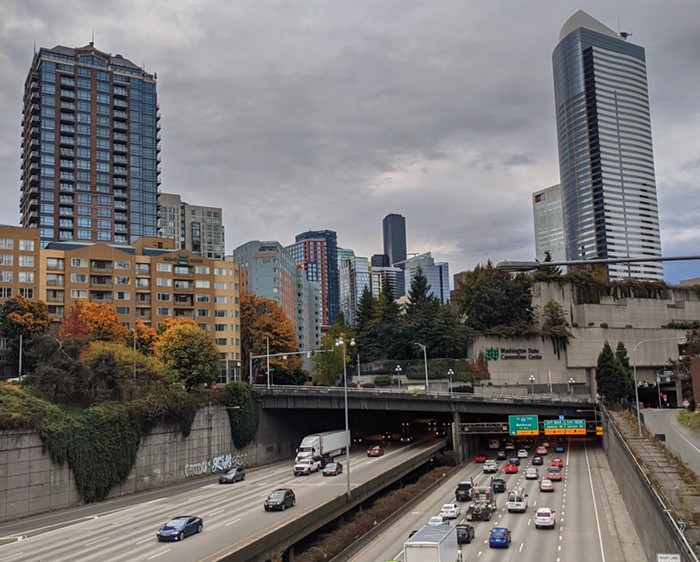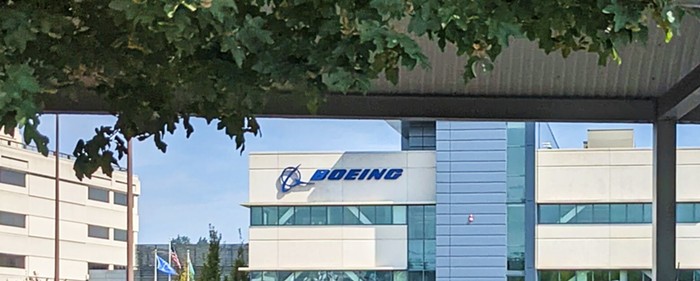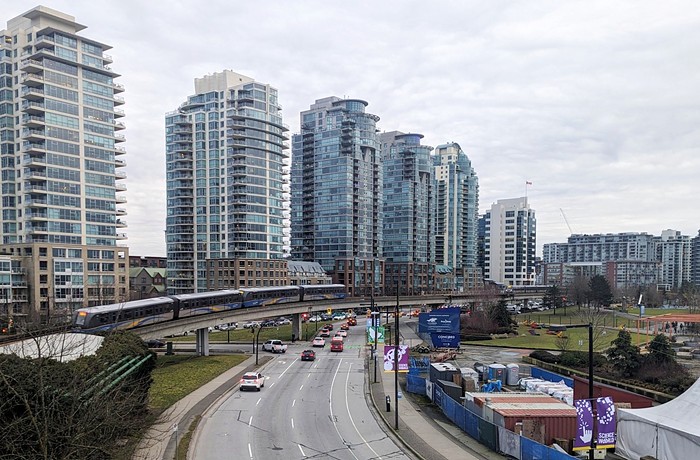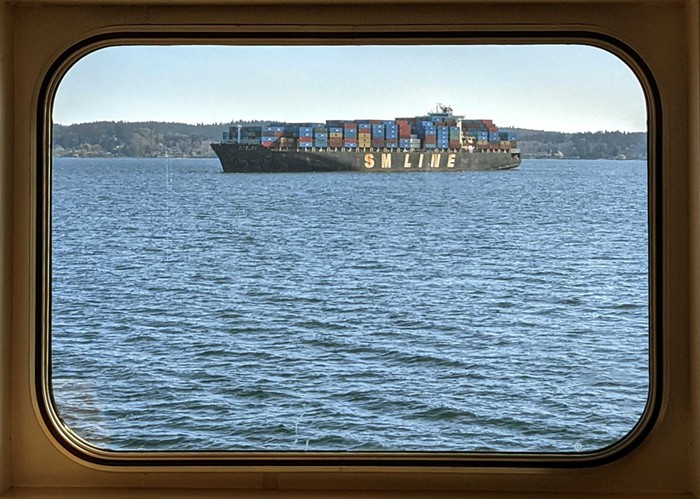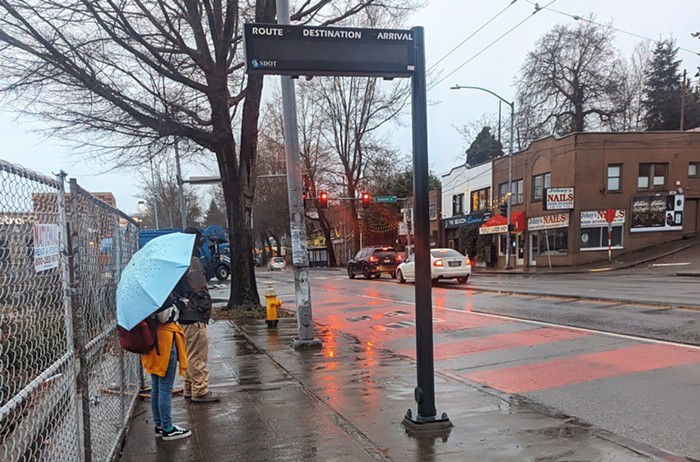When did this real-time information sign die? Before or soon after the masters of necro-economics declared the ongoing pandemic was over? The sign is in front of the northwest corner of Rainier and Genesse. It's supposed to provide information for Route 9 and Route 7, the latter of which, according to seattle.gov, is "one of the highest-ridership routes in Seattle, serving over 11,000 daily riders." It's also one of the most diverse routes. It's not unusual for a trip to have no white passengers. While at this stop on a rainy and recent morning, I was overwhelmed with the sense that my city had just given up. It was no longer even trying to do anything in the social direction. The dead sign, the long wait for the bus, the endless cars violating the Bus Only lane. Seattle's public spirit was gone like the soul of a zombie.
And why was I at this bus stop in the first place? Because Link is basically bust until February 4. If being on time and one's destination are to intersect, then Link's 1 Line (which is waiting forever for the first of its partners, 2 Line) is the last place to go these days. Also, Sound Transit, like SDOT, has, it seems, nothing to say to the public but that it has given up.
With two full weeks left of service disruptions on Sound Transit's 1 Line, the agency is still hoping that overcrowding issues and the delays they cause will "smooth themselves out"...which sounds a lot like hoping riders find other ways to get around.https://t.co/UQvEO6lqXE
— The Urbanist (@UrbanistOrg) January 22, 2024
The Urbanist is not entirely correct here. When the spokesperson for Transit, John Gallagher, said things will "smooth themselves out," they unambiguously said: "riders [should just give up and] find other ways to get around." This is what they and the organization they speak for is all about these days. We have given up on the public. 2 Line? We give up. CEO Julie Timm? We give up. The buses to and from Tacoma? We give up. And it's not just Sound Transit. Our city council has even made giving up a virtue. The selection of Tanya Woo to the seat vacated by labor warrior Teresa Mosqueda made it clear that they are not even trying to look like they are trying.
What you will not find in Woo is a single part of her being that feels the public. It's all about keeping the big boardrooms of the city satisfied, and hiring more of what Seattle would not need if its wealth was fairly distributed, cops. But what were we to expect from a politician who, "during her nearly 30 years as an eligible voter in Seattle," never "bothered to register to vote until 2015"? Her time is now. Her place can only be a city that has given up on big ideas, on the imagination of social progress, on a community that includes everyone. And one must keep in mind that the new city council could have made a daring democratic move and placed a homeless person in the vacated seat. Those at the bottom also deserve a voice. The powerful already get to say all they want all of the time. Why do we need Woo to say what is already endlessly said on KOMO, KIRO, Seattle Times, and the present king of our give-up moment?
Hiring freeze? Budget cuts? Fiscal challenges? What exactly is our mayor running? Clearly, he thinks it's a business. Theirs is the logic for an organization that has as its one and only goal the private (as opposed to public) accumulation of private wealth. But this is not the essence of an institution that represents all citizens. We can understand Amazon freezing its hiring and freaking out about the bottom line. But City Hall? The public cannot make money right away. It must always lose it for a long time. This is not possible in the panicked time horizon of a small business or a huge corporation. The market can't make investments with returns that are deep in the future. Even the 30-year mortgage is out of reach; it's backed by the government. The money in real-world investments (utilities, transportation projects, education) is way too slow to come for the quarterly earnings of the market. The public is, by its nature, a long-term commitment. Yet Harrell and his kind impose on it the short-termism of the "gabbing hands."
Furthermore, no scrying is needed to see that those at the bottom of the social order will feel the hiring freeze much, much more powerfully than those in the middle. Those at the top will, as always, feel nothing.
Let's end this post in Cal Anderson Park. What was once here? The Black Lives Memorial Garden. It was demolished at the end of last year. One can now go there to see not the cemetery of a city that had not given up. No. Things are much more ghostly here. What one sees is the absence of the cemetery for those who believed in the future and the power of the public.


